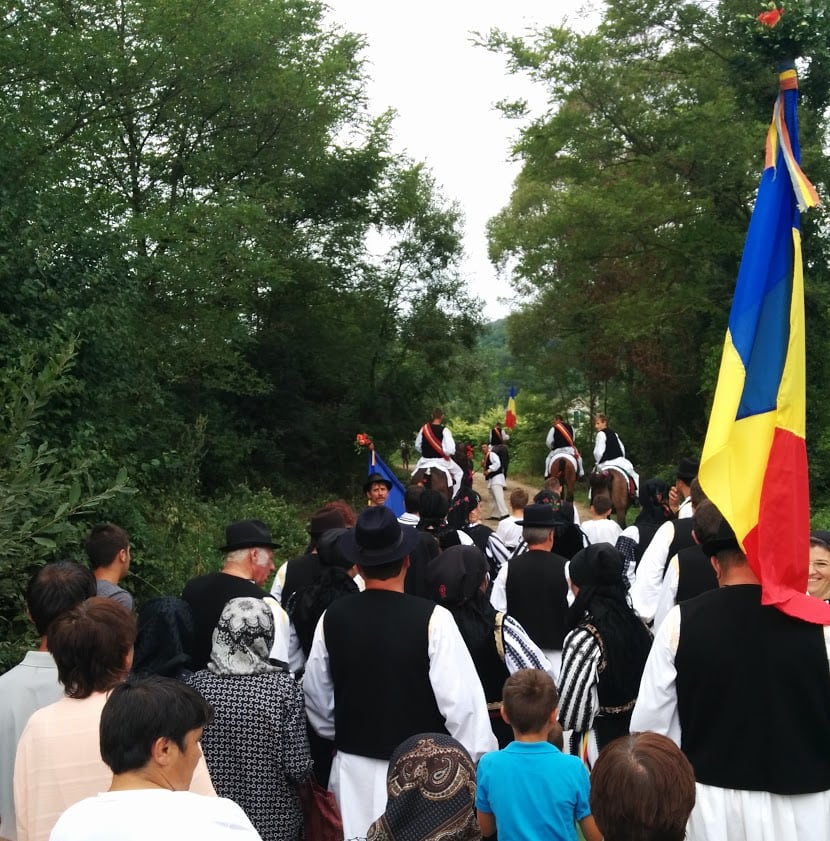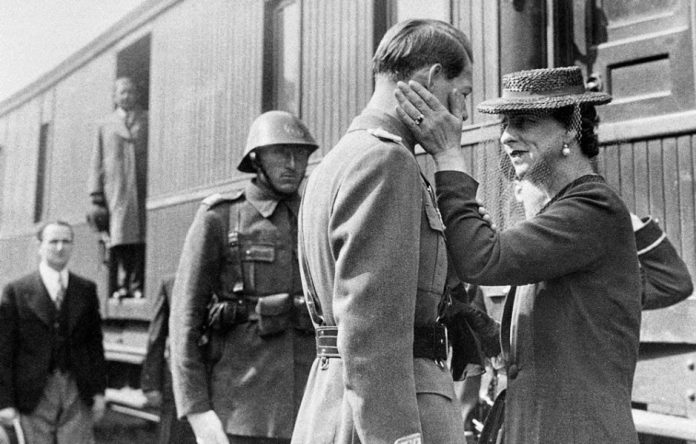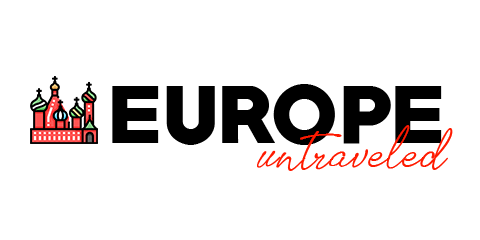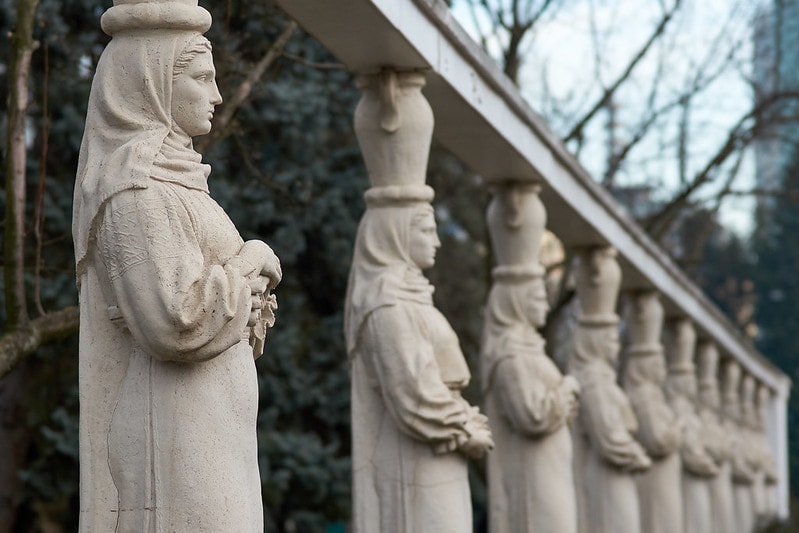1. Romania Does not Use the Euro
Although Romania is a member of the European Union, it has not adopted the Euro as its currency. Rather, Romanians use a national currency, the Romanian Leu, for most transactions.
Although the Euro is not the country’s national currency, Euros are commonly used for high-dollar transactions such as mortgages and car purchases.
Luckily, ATM machines and contactless card readers are everywhere in Romania. You can get by in most situations by using a credit card if you aren’t carrying Romanian lei.
2. Romania is not in the Schengen Zone
While Romania joined the European Union in 2007, it does not benefit from full Schengen Zone reciprocity. This means that you’ll need to check if you need to apply for a visa in order to enter the country with your passport. Luckily, Romania allows citizens of the US, Canada, Australia, and European countries to enter and travel for up to 90 days without a visa.
In my experience, the fact that Romania is not in the Schengen Zone is a major positive for most tourists. Since the country does not participate in the Schengen visa program, visiting Romania does not count toward the 90 days you are allowed to stay in Europe under the Schengen visa rules.
3. Romanians Aren’t Gypsies

In the West, there is a lingering stereotype that Romanians are Gypsies and beggars. While the country does have a sizeable Gypsy (Roma) population of 3.3%, Romanians and Gypsies are ethnically separate peoples.
Gypsies have their own culture, languages, and social structures that make them distinct from Romanians. In addition, Gypsies are racially distinct from Romanians since they descend from tribes in India, and not from European stock.
In fact, you’ll notice that relations between Gypsies and Romanians are not very good in Romania. Many Romanians complain that Gypsies are beggars who do not send their children to school, while Gypsies complain that Romanians discriminate against them.
4. Romanian Culture is Blunt
If you’re visiting from a place where politeness is an important part of social interactions, such as the UK or the US, then you may be surprised by Romanians’ general bluntness. When I visited Romania for the first time, I was shocked by how rude and impatient people were.
For example, while a clerk in an American supermarket typically greets customers with a friendly greeting and a smile, I’ve found that Romanian clerks rarely even make eye contact with you. In the US, you could probably lose your job for willfully ignoring your customers.
While in the West we are used to dealing with foreigners and people who do not speak our language, Romanians can be impatient with outsiders. Don’t take it personally if you’re chided by a shopkeeper or bus driver for not doing/saying the right thing at the right time.
Of course, this isn’t to say that Romanians are mean or even unfriendly, their culture just has different attitudes and expectations around politeness.
5. Romanians are Christian

One of my favorite aspects of Romanian culture is that people there are highly religious. In fact, over 60% of Romanians believe in God without a doubt and over 50% pray daily. It is refreshing to visit a European country where people still hold to traditional Christian values, which seem to be waning elsewhere in Europe.
In Romania, most people practice Romanian Orthodox Christianity. Orthodox churches are the focal point of most villages and line the streets of major cities.
One practice that you may find intriguing is that Romanians cross themselves whenever they pass by a church. Even on bus rides, you will notice the entire bus of Romanians furiously crossing themselves each time the bus drives by a church.
6. Romanian is a Latin Language
Another misconception Westerners have is that Romanian is a Slavic language. While Romania is surrounded by countries where Slavic languages are spoken, Romanian is not a Slavic Language.
Romanian is derived from Vulgar Latin, the language of the Roman Empire. As such, Romanian is a fully Latin Romance language which shares similarities with French, Spanish, Italian, and Portuguese.
Of course, there are some non-Latin elements of the Romanian language, as well. For example, the country’s close association to the Orthodox church has caused many words from church Slavonic to make their way into Romanian vocabulary. There are some Slavic, as well as Greek words, used in the modern Romanian language, but the language is primarily Latin.
7. Romanians are a Latin People, but it’s Complicated
For the most part, Romanians are a Latin people. Like Italians, Romanians are the descendants of the ancient Romans. In fact, the country’s name—Romania—is a reference to the country’s relationship to the Roman Empire.
While Romanians are primarily considered a Latin people, there are pockets of Slavic/Ukrainian, German/Saxxon, Hungarian, Serbian, Turkic and even Polish peoples scattered throughout Romania.
On your visit, you may notice that people tend to look different in the different regions of the country. Some Romanians have dark hair, dark eyes, and olive skin, while others are fair and blonde with blue eyes.
The largest ethnic minority in Romania are Hungarians, who live predominately in Western Transylvania. In many towns in this region, it is common to hear Hungarian spoken as the primary language.
8. Romania was Never Part of the USSR
Another misconception people have is that Romania is a former Soviet country. In reality, Romania was never part of the USSR.
Romania did, however, endure a nationalist communist movement which lasted for decades. Romanian communism is best-known for Nicolae Ceausescu, the country’s second and last communist ruler who was ousted in the country’s 1989 revolution.
Under the rule of Nicolae Ceausescu, and his predecessor Gheorghe Gheorghiu-Dej, Romania underwent severe transformations that shaped the country’s identity.
Many families during the communist period were forced to urbanize and relocated into city centers where they were employed in factories. Much of historic Bucharest was razed during this period in order to build communist housing blocks to accommodate the influx of industrial workers.
The best-known relic from this period is the massive Casa Poporului, or People’s Palace, which currently houses Romania’s parliament.
9. Romania is a Country in Flux (Everyone is Leaving)
Since Romania joined the European Union in 2007, Romanians have been fleeing their country in droves. While this trend has slowed somewhat, it’s estimated that 17% of all people born in Romania now live outside of Romania.
Poor economic conditions are the primary driver behind the exodus of Romanians from Romania. Compared to Romania, the UK, Spain, and Germany offer much better pay for well-educated Romanians.
Within the country, Romanians from rural towns and villages are moving to the country’s urban centers at a rapid rate. Villages which were once teeming with life and families are now mostly empty.
This confluence of economic and demographic realities means Romania is a country in flux. As its population shrinks and ages, its future as a nation seems less certain. While this is a common theme throughout Europe at the moment, you will notice this trend is especially pronounced in Romania.
10. The Country’s Charm is in the Villages
If you want to know what it’s like to time travel, then look no further than Romania’s villages. While Romania’s large cities feel anonymous and gray, its villages are full of old-world charm and culture.
On a recent trip to Romania, I took a bike tour through small villages around the city of Sibiu. This region, known as marginimea Sibiului, is known for its traditions and the agrarian lifestyle of its inhabitants.
Over the course of my tour, I came across a wedding being held in the dusty streets of a village. The bride and groom were followed in procession by the townspeople, all dressed in their Sunday best. An accordion player accompanied the wedding party through the village to the small chapel, where the local priest blessed and wed the couple.
Scenes like this are common in rural Romania. Children ride horse-drawn carts full of hay through the dirt roads. Old ladies sell vegetables on the side of the road. Romania’s villages are full of charm that take you back to a time when things were simple.
11. Romanians Speak English
Romanians are very intelligent people, and many of them speak English. In fact, a recent study by Pew found that 100% of Romanian students are actively learning English as a second language.
Since many Romanians will work abroad at some point, Romanians understand they need to know English in order to be marketable in the European labor market. For this reason, Romanians begin learning English in kindergarten and continue their studies well into high school and university.
While older people may not have knowledge of the English language, I’ve found that younger Romanians are overwhelmingly proficient in English.
12. Romania was a Monarchy

Prior to becoming a socialist republic in 1947, Romania was a monarchy ruled by the German House of Hohenzollern Dynasty. Under the monarchy, Romania excelled economically and gained sovereignty.
Romania’s last king, King Michael I, died in 2017 at the age of 96. King Michael was a loyal king who served Romanians well. King Michael was made King of Romania at the age of six years old, following the abdication of his father in the wake of a scandal.
During his reign, King Michael led a coup d’etat against the Axis-aligned regime in Romania and took Romania to the side of the Allies. Following the installation of a communist regime in 1947, King Michael was forced out of Romania and into exile.
When the communist regime eventually fell in 1992, King Michael I was allowed to return to Romania for a visit. His visit drew a giant crowd of one million people in the city of Bucharest, who hailed his return.
Fearing his popularity, the new government once more barred King Michael from ever returning to Romania. While he later would be allowed to return, he spent most of his life in exile in Switzerland. He attended the wedding of Queen Elizabeth II, who is his cousin.
13. Romanians Pickle Everything
Romanians pickle EVERYTHING. Pickled foods are common throughout Eastern Europe. For example, pickled cabbage is a staple in many countries including Poland, Bulgaria, Ukraine, and Russia.
If you aren’t a fan of sour foods, then you may not love Romanian food. Romanian food, like other European cuisines, is full of sour flavors. Dill is one of the most commonly used spices and Romanians add fermented wheat to their soup to make it extra sour.
One of the most interesting pickled foods I’ve had in Romania is pickled watermelon. This sweet and sour snack is common during the winter, particularly in the country’s East, where watermelon is especially popular.

